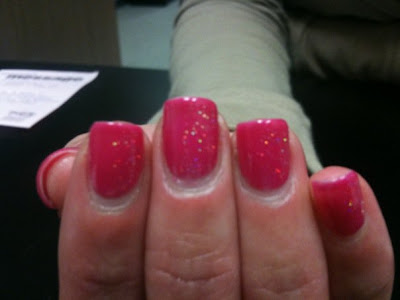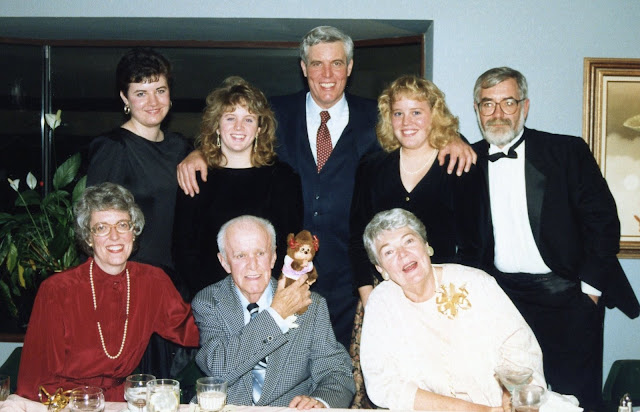This is an excellent article by the National Coaches Assocition of America.If you Coach, use the article as a template for self reflection. If you are a supporter or parent of a player who goes to games, use it too reflect upon your team's Coach, then figure out a way to help the Coach.
But don't dump on the Coach becuase things may not being going well.The Craft of Coaching Many qualities and attributes are needed in moving players to new levels Bill Beswick, renowned sports psychologist formerly of Manchester United and now with Middlesborough FC, has a saying which should inspire all coaches:
“A good coach is able to take a player where they have never been before and will not get to on their own.” This in many ways gives meaning to what it is to coach and encapsulates the primary purpose of the coaching profession. This article explores coaching as a craft, a professional endeavor which requires pride of performance, acquisition of highly-valued skills and has an objective which is both enormously satisfying and develops an insatiable appetite for more.
At an NSCAA Academy a few years ago, a disgruntled graduate from a highly successful Division I college program said, “I didn’t learn one thing in four years of college; I haven’t improved since I left high school.” It was astonishing to discover how disenchanted this player had been with his college experience. He had played in several Final Fours, one of which his team won. It is clear that serious players want more from a coach than winning trophies. They want to prepare for the next level. They want to get better.
Many would argue that the ultimate acid test of a player is “What impact did you have on the game?” Surely the ultimate acid test of a coach is “What impact did you have on your players?”
It would be disingenuous to assert that a player’s sole means of improvement is through good coaching. Coaches take too much credit for producing good players and too much criticism for producing poor ones. Playing with and against better players ultimately is what improves a player. Players also improve from modeling – watching and imitating good players. Improvements are accelerated for players immersed in a soccer culture where good play is appreciated and the game is revered.
Player improvement also occurs, undeniably, from participating in focused, dynamic and well-structured practice sessions. The objective of the NSCAA Academy is to explore the coach’s role in the development of players and to explore coaching and teaching as a craft, a highly prized skill.
Managing and coachingIt is important to highlight the difference between managing and coaching, if only to distinguish the difference between winning trophies and improving players. Many successful programs emerge because the coach is a good recruiter, scheduler, fundraiser, negotiator and manager of people. The management of a team or club is a vital task in building a winning culture. The managerial aspects of coaching are critical and are receiving greater attention in our Academies. It is possible, however, for programs to have exceptional winning records where players do not improve.
It is not entirely surprising to hear of players from winning programs who are dissatisfied with the quality of coaching they receive on the training ground. They have been recruited for their ability, but they stagnate as players due to a lack of interest or lack of skill of the coach to help them. How much better would it have been for the aforementioned candidate to have won trophies and improved during his time as a player? How much more rewarding would the playing experience have been if the coach had taken player development as seriously as managing the program? The very best coaches we have, obviously, do both.
THE COACH AS A "CRAFTSMAN”The craft of coaching players comes down to four basic tasks. The end results are carefully designed and focused practice sessions in an environment which closely resembles the competitive pressure of a game, and in which players improve. The four basic tasks are 1) observation, 2) organization, 3) instruction and 4) motivation.
Observation - Match AnalysisTo discover what the players need to practice, the coach must observe them play in a game. The game tells us what the players need. The observations the coach makes during a game will give the practice session a focus. Consequently, the soccer coaching model on game day is quite different from football, basketball or lacrosse, which encourages a high degree of interaction between players and coaches. Possibly baseball or ice hockey are better models for soccer, wherein the coach quietly observes the game, writes notes and occasionally exhorts players to perform.
Match observation and analysisThis is a very difficult skill. Some useful tips to develop this skill include:
• Watching a lot of soccer games.
• Sitting quietly with a pad and pen to note observations. Some coaches have an assistant do the writing while they observe.
• Developing the ability to look away from the ball. This is difficult, because the ball is a magnet for attention. Here are three classic scenarios where looking away from the ball might be important:
- If midfielders get caught in possession, you may accuse them of indecision. Had you looked away from the ball at the forwards, however, you would have seen that they had not checked, made runs, etc.
- Your forwards have the ball outside opponent’s penalty box. Are your backs pushed up to the half line to compact the team defensively?
- Your team plays a 4-4-2. When the right flank has the ball, does left flank come inside to become a third center forward, or does he/she stay wide? This has implications for getting into penalty area if a cross is delivered or leaving space for overlapping left back.
Compartmentalizing observation into categories: Individual• Evaluation of your players’ technical, tactical, physical and psychological performance.
Small group• Observation of backs, midfielders, forwards, etc.
• Observation of vertical thirds, left flank, central, right flank
• Observation of players within 12 yards of the ball
• Observation of first and second attackers
• Observation of first and second defenders
Team• Does team exhibit ability to apply principles of game?
Attack Penetration
Support
Mobility
Width
Creativity
Defense Pressure
Cover
Balance
Compactness
Predictability
The scope of match analysis is far beyond the limits of this article, but covered more fully in the NSCAA Advanced National and Premier Diplomas. Match analysis provides the delineation of the themes that must be developed in practice.
Organization – developing practice sessionsSoccer players learn to play better soccer by practicing soccer-like exercises. Contrived drills, excessive standing in lines, scrimmages with no focus, running laps have very little benefit to players. We explore many different methods of coaching in the Academy but the purpose of all the methods is to help the coach organize training sessions which improve players by having them play soccer.
Facilitating Learning“The game is the teacher” is a phrase which we constantly hear. In practical terms, this maxim means that the soccer coach organizes conditioned games to improve players. The kind of conditions the coach puts on the games will help teach the players. This process is called facilitating learning. Part of the skill of an advanced coach is to design exercises that specifically address problem areas. The conditions the coach puts on games are examined in detail in the NSCAA Academy, but basically fall into the following categories:
• Numbers of players (e.g. 4 v. 2, 8 v. 8, 6 v. 6 + 1, etc.) • Size and shape of field (narrow and long for vertical passes, short and wide for shooting or crossing.) • Goals or methods of scoring (shooting into a full goal, dribbling across a line, 6 passes equals a goal, etc.) • Numbers of touches (1 touch to encourage passing and support play, 2 touches to encourage receiving) • Zonal games (field marked off by cones with restrictions as to who can go into certain zones)
The methods a coach uses to improve players depend on such factors as age, ability and ultimate purpose of a practice. The methods of a coach of seven-year-olds uses are completely different than those of a college coach. A coach preparing to play an opponent may be more concerned about the future game than the one which is past.
Basic guidelines of teachingFocus: Improvements will more likely occur when concentration is on two or three concepts.
Progression: Sequencing of exercises follows logical progression. The coach may work with the back four versus two center forwards before putting them into an 11 v. 11 game. Having a 9-year-old practice dribbling in 1 v. 1 may precede playing in a 5 v. 5 game.
Duration: Practices should be about the same length as a game. Very little quality learning happens in the final half hour of a two-and-a-half hour practice.
All coaches are encouraged to write down a practice plan regardless of age group of the players. Practice plans should delineate practice sequencing and duration of exercises.
Practice componentsPractices consist of four main components:
Warm-up – 20 percent of time. Should be related to theme and focus of practice (e.g. passing in pairs, circle routines)
Teaching exercises – 50 percent of time. Two or three exercises that focus on observations the coach makes from games. Coach may split team up (e.g. goalkeepers and defenders in one end, midfielders and forwards in other)
Final game – 20 percent of time. 11 v. 11 or even-numbered game. Coach emphasizes points from the practice.
Warm-down – 10 percent of time. Players jog, stretch together; led by captain, assistant coach.
Some coaches will do fitness between final game and warm-down. The coach may meet with players prior to session to explain what they will be doing in practice. Some coaches will show video clippings of the previous games to highlight their observations. This is also helpful in changing the players frame of mind and preparing them, psychologically, for practice.
Instruction – “The Teachable Moment”Possibly the biggest difference between skilled coaches and novice coaches is in the quality and quantity of their instruction. There are certain “teachable moments” which occur in a practice session when the skilled coach speaks and addresses a player or group of players. The number of instructional stoppages and their timing very much will be a matter of choice for the coach. It will also depend on the age group; 14-year-olds will need more instruction than professionals. The “teachable moments” happen at fairly predictable times:
• When something is done incorrectly
• When something is done correctly
• Between exercises, during water breaks
• When the players are clearly fatigued and will welcome a rest and instructional moment
• Ball out of play
Instructional points can be made to an individual, group or a team. They can be made while play continues or play can be stopped. Most importantly, they must focus on the actual teaching theme or goal.
Different Instructional Examples to Improve PlayersTony DiCicco, 1998 U.S. Women’s National TeamConducting a practice session for the Women’s National Team, DiCicco’s stoppages almost universally came at the moment a player did something right. He brought the players’ attention to what it looked like when done correctly, praised them and moved on. He never made any corrections to address mistakes the players made.
Bob Gansler, 2002 Kansas City WizardsHe conducted a practice session which contained three dynamic exercises each lasting 20 minutes. He never stopped any of the sessions once. He made all of his coaching points during water breaks and between changeovers in exercises. A true proponent of “the game is the best teacher.”
Helmut Schoen, 1974 German National Team ManagerPaul Breitner relates how Schoen walked over to the 2 v. 2 exercise where he and Franz Beckenbauer played. Schoen never said a word, but Breitner related how Schoen’s presence burned a hole in the back of his neck. He redoubled his efforts in the exercise. Sometimes silence can be the coach’s greatest ally. Clearly there are no absolutes as to how the coach gets improvement out of players. Coaches must understand what is best for their environment and fits their personality. Avoid:
- Too many stoppages which prevent any flow from developing
- No instruction at all. The coach merely supervises exercises which have no meaningful focus and in which the players receive no guidance.
Motivation — light a spark in a playerOne of the great rewards of coaching is helping to energize a player and stimulate a player so that he or she wants to improve. Players will improve only if they want to improve, but the coach can offer extrinsic motivation which lights a spark in a player. The coach does this in a number of ways.
Methods of motivation- Quality practices. Practices which are organized, focused and facilitate clear improvement.
- Specific instruction. Coaching points which specifically relate to the focus of the session.
- Mixture of positive and negative reinforcement. Coaches must be demanding at times. The best coaches understand how to mix praise with honest observation in such a way as to challenge the player to improve.
- Appearance and participation. The coach should have a modicum of physical fitness and dress like a coach. Players like it when a coach occasionally joins in a practice. (Hint: make yourself the +1 who cannot be tackled.).
- Realistic expectations. Prudent coaches set realistic goals and targets for the players. They keep the game within the context of how good the team is compared to who they are playing. The coach is wise to forewarn players, parents and supporters that, in soccer, nothing is ever guaranteed.
- Humanity. Personal honesty and integrity are respected by players. Players will clearly respond to a coach who displays an interest in them aside from their soccer ability.
Enjoy your coaching!









